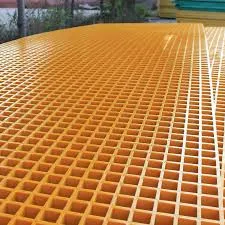
-
 Afrikaans
Afrikaans -
 Albanian
Albanian -
 Amharic
Amharic -
 Arabic
Arabic -
 Armenian
Armenian -
 Azerbaijani
Azerbaijani -
 Basque
Basque -
 Belarusian
Belarusian -
 Bengali
Bengali -
 Bosnian
Bosnian -
 Bulgarian
Bulgarian -
 Catalan
Catalan -
 Cebuano
Cebuano -
 China
China -
 China (Taiwan)
China (Taiwan) -
 Corsican
Corsican -
 Croatian
Croatian -
 Czech
Czech -
 Danish
Danish -
 Dutch
Dutch -
 English
English -
 Esperanto
Esperanto -
 Estonian
Estonian -
 Finnish
Finnish -
 French
French -
 Frisian
Frisian -
 Galician
Galician -
 Georgian
Georgian -
 German
German -
 Greek
Greek -
 Gujarati
Gujarati -
 Haitian Creole
Haitian Creole -
 hausa
hausa -
 hawaiian
hawaiian -
 Hebrew
Hebrew -
 Hindi
Hindi -
 Miao
Miao -
 Hungarian
Hungarian -
 Icelandic
Icelandic -
 igbo
igbo -
 Indonesian
Indonesian -
 irish
irish -
 Italian
Italian -
 Japanese
Japanese -
 Javanese
Javanese -
 Kannada
Kannada -
 kazakh
kazakh -
 Khmer
Khmer -
 Rwandese
Rwandese -
 Korean
Korean -
 Kurdish
Kurdish -
 Kyrgyz
Kyrgyz -
 Lao
Lao -
 Latin
Latin -
 Latvian
Latvian -
 Lithuanian
Lithuanian -
 Luxembourgish
Luxembourgish -
 Macedonian
Macedonian -
 Malgashi
Malgashi -
 Malay
Malay -
 Malayalam
Malayalam -
 Maltese
Maltese -
 Maori
Maori -
 Marathi
Marathi -
 Mongolian
Mongolian -
 Myanmar
Myanmar -
 Nepali
Nepali -
 Norwegian
Norwegian -
 Norwegian
Norwegian -
 Occitan
Occitan -
 Pashto
Pashto -
 Persian
Persian -
 Polish
Polish -
 Portuguese
Portuguese -
 Punjabi
Punjabi -
 Romanian
Romanian -
 Russian
Russian -
 Samoan
Samoan -
 Scottish Gaelic
Scottish Gaelic -
 Serbian
Serbian -
 Sesotho
Sesotho -
 Shona
Shona -
 Sindhi
Sindhi -
 Sinhala
Sinhala -
 Slovak
Slovak -
 Slovenian
Slovenian -
 Somali
Somali -
 Spanish
Spanish -
 Sundanese
Sundanese -
 Swahili
Swahili -
 Swedish
Swedish -
 Tagalog
Tagalog -
 Tajik
Tajik -
 Tamil
Tamil -
 Tatar
Tatar -
 Telugu
Telugu -
 Thai
Thai -
 Turkish
Turkish -
 Turkmen
Turkmen -
 Ukrainian
Ukrainian -
 Urdu
Urdu -
 Uighur
Uighur -
 Uzbek
Uzbek -
 Vietnamese
Vietnamese -
 Welsh
Welsh -
 Bantu
Bantu -
 Yiddish
Yiddish -
 Yoruba
Yoruba -
 Zulu
Zulu
Proper Extension Techniques for Threaded Rods
Extending a Threaded Rod A Guide to Proper Techniques
Extending a threaded rod is a common task in various applications, from construction to automotive repairs. Threaded rods are versatile fasteners that can be used to connect or hold objects together, and often require extensions to meet specific project needs. To ensure safety and effectiveness, it’s essential to understand the proper techniques for extending a threaded rod.
Understanding Threaded Rods
Before diving into extension methods, it’s important to comprehend what a threaded rod is. A threaded rod is a long, cylindrical piece of metal with continuous threads along its length. These rods can be made from various materials, including steel, stainless steel, and plastic, each suitable for different applications. The extension of a threaded rod typically involves either adding more length to an existing rod or connecting two rods together.
Techniques for Proper Extension
extension of a threaded rod how to properly extend a ...

1. Using a Coupling Nut One of the simplest and most effective methods for extending a threaded rod is by using a coupling nut. This is a hexagonal nut that is longer than a standard nut and designed specifically to join two threaded rods. To extend your rod, first, ensure that both rods have the same diameter and thread pitch. Then, screw one end of each rod into the coupling nut, tightening securely. This method provides a strong and stable connection.
2. Welding For those who require a permanent extension, welding is a viable option if you have the necessary skills and equipment. Align the ends of the threaded rod to be joined, and use a welding machine to fuse them together. Ensure that the joint is clean and free of contaminants to achieve a strong bond. This method is best suited for high-stress applications where a secure, permanent connection is necessary.
3. Threading New Lengths If you require a custom extension, consider purchasing a length of matching material and threading it yourself. This requires a die set that matches your existing rod's specifications. After threading both ends of the new rod, you can join it to the existing rod using nuts or a coupling nut.
Conclusion
Extending a threaded rod requires attention to detail and an understanding of the materials and techniques involved. Whether using a coupling nut for a quick and secure connection, welding for permanence, or threading a custom length, following best practices will ensure the integrity of your extension. Always prioritize safety by wearing appropriate personal protective equipment and adhering to all guidelines related to your specific application. By doing so, you’ll achieve the best results in your projects.
Latest news
-
Exploring the Benefits of Top Hammer Drifter Rods for Enhanced Drilling PerformanceNewsJun.10,2025
-
High-Precision Fiberglass Winding Machine for GRP/FRP Pipe Production – Reliable & Efficient SolutionsNewsJun.10,2025
-
FRP Pipes & Fittings for Shipbuilding - Corrosion-Resistant & LightweightNewsJun.09,2025
-
Premium FRP Flooring Solutions Durable & Slip-ResistantNewsJun.09,2025
-
Premium Fiberglass Rectangular Tanks Durable & Lightweight SolutionNewsJun.09,2025
-
Tapered Drill String Design Guide Durable Performance & UsesNewsJun.09,2025









